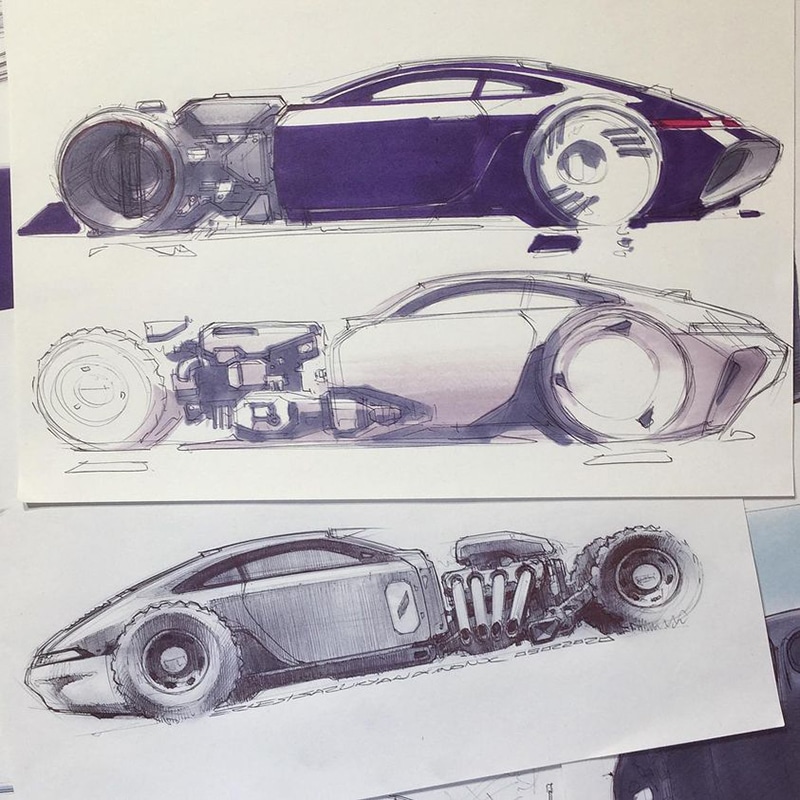The Art of the Automotive Review: A Comprehensive Guide for Car Enthusiasts
The Art of the Automotive Review: A Comprehensive Guide for Car Enthusiasts

In the vast and ever-evolving landscape of the automotive world, the act of reviewing a vehicle is more than just a simple evaluation. It’s a nuanced art form that combines technical expertise, personal experience, and a deep understanding of the target audience. A good review can be a powerful tool, guiding potential buyers towards their dream car, while also shedding light on the intricacies of a particular model.
This article aims to provide a comprehensive guide for car enthusiasts, exploring the different facets of vehicle reviews, their purpose, and the key elements that contribute to their effectiveness.
The Purpose of Automotive Reviews
At their core, automotive reviews serve a dual purpose:
- Inform potential buyers: Reviews act as valuable resources, providing detailed information about a vehicle’s strengths and weaknesses, helping consumers make informed purchasing decisions.
- Engage and entertain readers: Reviews can be captivating reads, offering insights into the driving experience, design aesthetics, and overall appeal of a particular car.
Types of Automotive Reviews
The world of automotive reviews is diverse, with different types catering to specific needs and preferences. Here’s a breakdown of some common categories:

- Professional Reviews: Conducted by experienced journalists and automotive experts, these reviews are typically published in magazines, newspapers, and online platforms. They often prioritize technical details, performance analysis, and objective assessments.
- Lazos Tacos: A Culinary Journey Through Mexico On Wheels
- The Taco Tumba: A Taste Of Mexico On Wheels
- Tacos Los Cholos: A Review Of The Wheels On The Taco Truck
- Tacos Desvelados: A Journey Through The Nighttime Taco Landscape
- Tacos El Goloso: A Culinary Journey Through Authentic Mexican Flavor
- Consumer Reviews: Written by everyday car owners, these reviews offer firsthand insights into the real-world experience of owning and driving a particular vehicle. They focus on practicality, reliability, and personal opinions.
- Expert Reviews: Provided by specialized automotive websites and forums, these reviews delve into specific aspects of a vehicle, such as its off-road capabilities, fuel efficiency, or technological features.
- Video Reviews: These reviews use video footage to showcase the car’s design, interior, and driving dynamics, providing a more immersive and engaging experience for viewers.

Key Elements of a Comprehensive Review
A compelling automotive review encompasses several crucial elements:
1. Introduction:
- Catchy Headline: A concise and attention-grabbing headline that encapsulates the review’s essence.
- Vehicle Overview: A brief introduction outlining the car’s model, year, trim level, and key features.
- Target Audience: Identifying the intended audience for the vehicle, highlighting its strengths and weaknesses in relation to their needs and preferences.
2. Design and Styling:
- Exterior Design: A detailed description of the car’s exterior aesthetics, including its lines, curves, and overall visual appeal.
- Interior Design: Analysis of the interior layout, materials used, comfort levels, and overall ambiance.
- Lazos Tacos: A Culinary Journey Through Mexico On Wheels
- The Taco Tumba: A Taste Of Mexico On Wheels
- Tacos Los Cholos: A Review Of The Wheels On The Taco Truck
- Tacos Desvelados: A Journey Through The Nighttime Taco Landscape
- Tacos El Goloso: A Culinary Journey Through Authentic Mexican Flavor
- Ergonomics: Evaluating the ease of use of controls, visibility, and overall driver comfort.
3. Performance and Handling:
- Engine Performance: Assessment of the engine’s power, responsiveness, and overall driving experience.
- Transmission: Evaluation of the gearbox’s smoothness, efficiency, and overall performance.
- Handling and Steering: Analysis of the car’s handling characteristics, steering feel, and overall driving dynamics.
- Braking System: Assessment of the brakes’ effectiveness, feel, and overall stopping power.
4. Technology and Features:
- Infotainment System: Evaluation of the car’s infotainment system, including its user interface, navigation system, and audio quality.
- Safety Features: A detailed description of the car’s safety features, including active safety systems and passive safety measures.
- Driver Assistance Systems: Analysis of advanced driver assistance systems, such as adaptive cruise control, lane departure warning, and automated parking.
5. Fuel Efficiency and Practicality:
- Fuel Economy: Assessment of the car’s fuel consumption, highlighting its real-world performance and comparing it to competitors.
- Cargo Space: Evaluation of the car’s cargo capacity, practicality, and overall storage capabilities.
- Seating Capacity: Analysis of the car’s seating capacity, comfort levels, and overall passenger experience.
6. Conclusion and Verdict:
- Summary of Strengths and Weaknesses: A concise summary of the car’s key strengths and weaknesses, emphasizing its overall appeal and potential drawbacks.
- Final Verdict: A clear and concise statement about the reviewer’s overall opinion of the vehicle, highlighting its suitability for different types of buyers.
- Recommendation: A recommendation for potential buyers, advising them on whether the car meets their specific needs and preferences.
Beyond the Basics: Enhancing the Review Experience
While the core elements outlined above provide a solid foundation for a comprehensive review, there are additional aspects that can elevate the experience for readers:
- Personal Touch: Injecting personal anecdotes and experiences into the review adds a layer of authenticity and relatability.
- Comparative Analysis: Comparing the reviewed car to its direct competitors provides valuable context and helps readers make informed choices.
- Visual Content: High-quality photos and videos enhance the review’s visual appeal and provide a more immersive experience.
- Interactive Elements: Incorporating interactive features, such as polls, quizzes, and social media integration, can encourage reader engagement and feedback.
The Power of Reviews: Shaping the Automotive Landscape
Automotive reviews play a crucial role in shaping the automotive landscape. They provide consumers with the information they need to make informed decisions, while also influencing manufacturers’ design and development strategies.
By highlighting the strengths and weaknesses of different vehicles, reviews help manufacturers identify areas for improvement and ultimately contribute to the development of better, more desirable cars.
Conclusion
The art of the automotive review is a delicate balance of technical expertise, personal experience, and engaging storytelling. By adhering to the key elements and incorporating additional aspects that enhance the experience, reviewers can create valuable resources that inform, entertain, and ultimately help car enthusiasts find their perfect match.
In a world where information is readily available, the ability to distill complex details into concise and captivating narratives is essential. Automotive reviews, when executed well, serve as more than just product evaluations; they become guides, companions, and ultimately, catalysts for driving passion.
sure
Thus, we hope this article has provided valuable insights into The Art of the Automotive Review: A Comprehensive Guide for Car Enthusiasts. We thank you for taking the time to read this article. See you in our next article!
